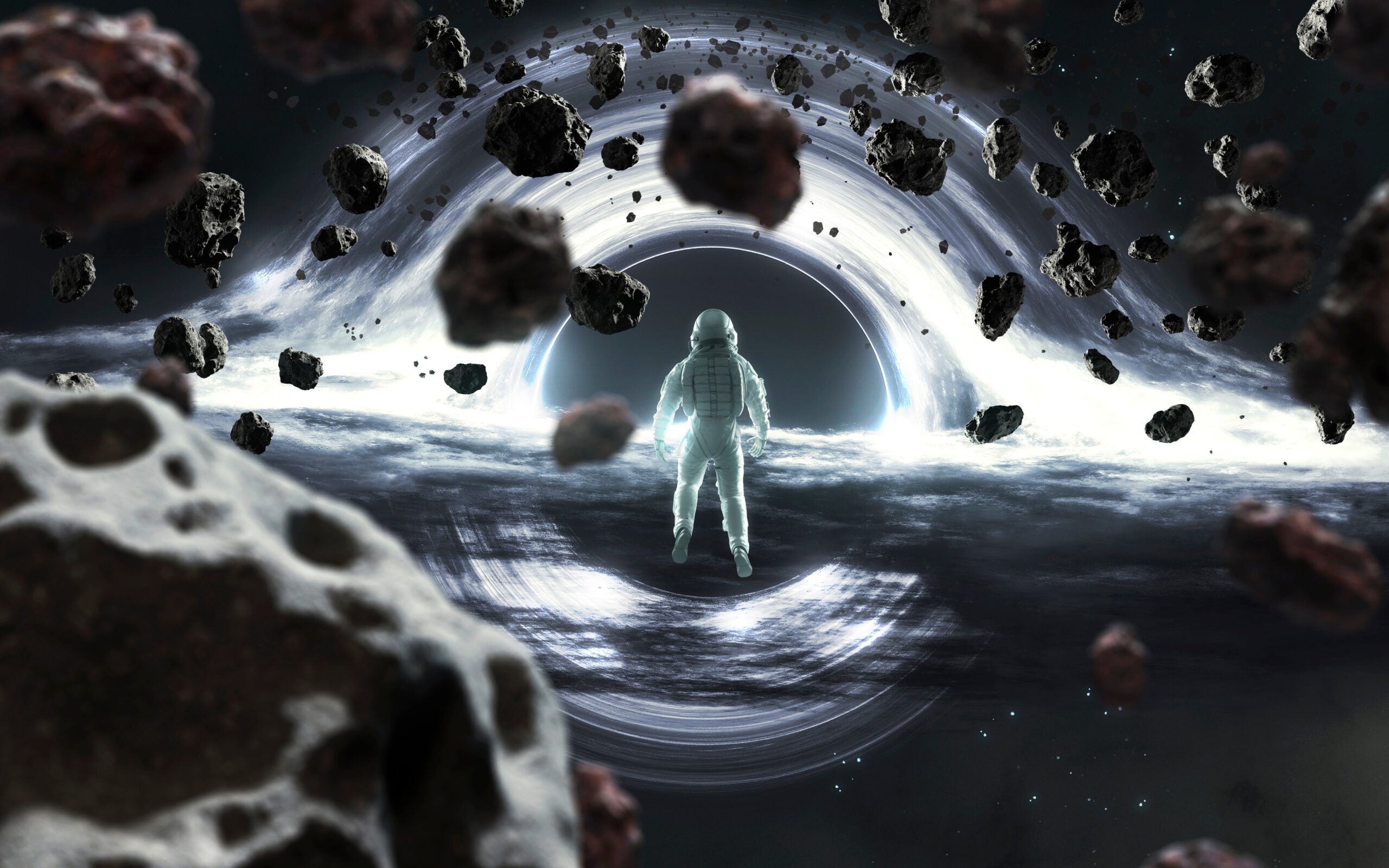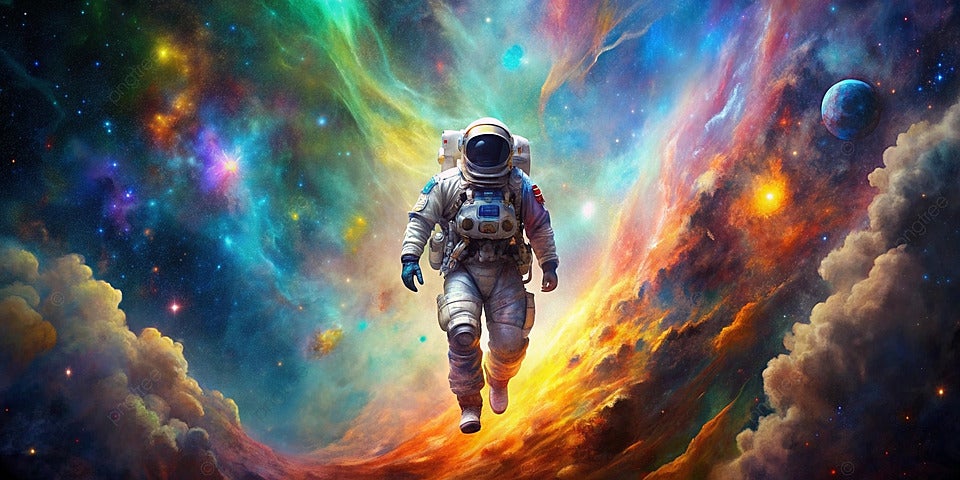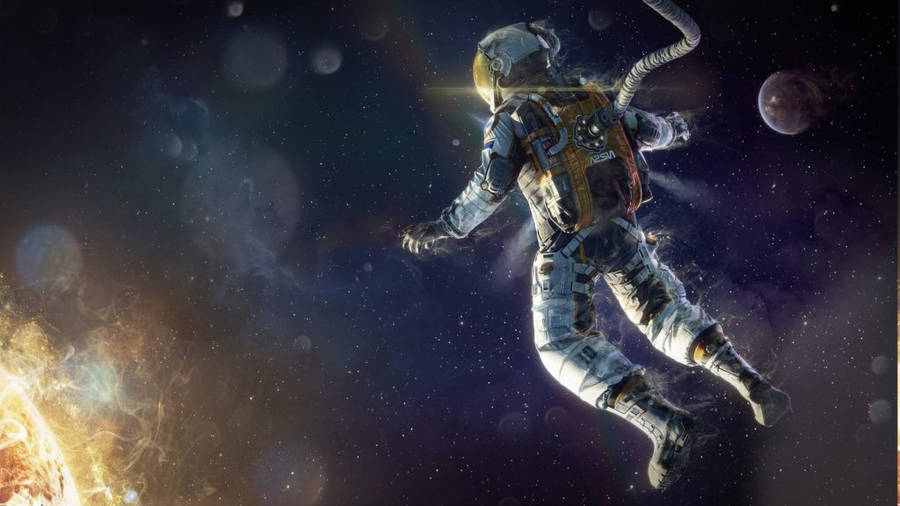Let’s reimagine the walk of all walks—not just a meander through the neighborhood or even a trek spanning continents, but an epic journey to the very edge of the universe. It’s a quest so vast, so mind-bogglingly immense, that you’ll need to pack more than a sturdy pair of boots. Stock up on snacks—an interstellar buffet, perhaps—and, most importantly, figure out how to break every known law of physics.
As you set out, the cosmos unveils its splendor in ways that defy imagination. Picture newborn stars igniting their nuclear furnaces, their brilliance casting light across vast cosmic nurseries. Witness the violent, awe-inspiring collapse of dying suns into black holes—points of infinite density where even light cannot escape. Observe galaxies colliding in slow-motion dances lasting billions of years, their gravitational embraces warping the very fabric of spacetime. Here, time itself bends, stretches, and twists in ways Einstein barely began to describe.
This journey is more than a walk; it’s a passage through the theater of the cosmos, where every act is a masterpiece of creation, destruction, and transformation. It’s a journey that pushes the boundaries of what the human mind can comprehend, a reminder that we are tiny, fleeting sparks in a universe vast beyond reckoning. Still interested? Let’s break it down, step by (very hypothetical) step.

First, let’s tackle a glaring issue: humans can’t walk in space. Not because you’re lazy (we’ll assume you’re not), but because there’s no surface to step on and no air to push against. Spacewalking—the kind astronauts do—involves floating, not walking. Without gravity or friction, your feet would just flail around uselessly, leaving you awkwardly tumbling. Not a great look.
So for our thought experiment, we’re focusing on velocity. We’ll pretend your walking speed of about 3 miles per hour (5 kilometers per hour) works like a spaceship’s propulsion. You’re a human treadmill moving steadily forward, defying physics and logic alike.
Walking through nebulae, stellar nurseries, or near black holes presents an array of complexities that render such an endeavor extremely challenging.
Related Stories
First, nebulae—vast clouds of gas and dust—may look dense and colorful in images, but they are actually incredibly sparse, with densities often lower than the best vacuums we can create on Earth. Walking through a nebula would be akin to trying to hike through a near-perfect void. Additionally, their sizes span light-years, making them incomprehensibly vast. Without a clear surface or medium to walk on, any progress would be limited to floating in a frictionless environment.
Stellar nurseries, where stars are born, are equally inhospitable. These regions teem with intense radiation from young stars and supernova remnants. Ultraviolet and X-ray radiation would be lethal to any unprotected human, frying biological tissue and electronics alike.
Furthermore, gravitational forces within these regions can be chaotic, as protostars form and interact dynamically, creating turbulent zones that would make stable footing impossible. Walking through such a place would require not just radiation shielding but also navigation systems capable of adapting to constantly shifting gravitational forces.
The dangers increase exponentially near black holes. A black hole’s immense gravity warps spacetime itself, creating a region known as the event horizon, beyond which not even light can escape. Approaching this region would subject a human to tidal forces so extreme they would be “spaghettified”—stretched and compressed simultaneously—long before reaching the event horizon.

Even if you could somehow avoid being torn apart, the lack of a physical path to walk on and the relativistic effects of time dilation would make movement and communication incomprehensible in human terms. For example, time near a black hole slows dramatically relative to distant observers, meaning a step forward could translate to years of elapsed time elsewhere in the universe.
Other stellar bodies like pulsars and neutron stars pose their own unique challenges. Pulsars emit intense electromagnetic radiation in focused beams, which would instantly incinerate any nearby object, let alone a human walker. Neutron stars, meanwhile, have gravitational fields so strong that a mere teaspoon of their matter weighs billions of tons. Walking near one would crush anything underfoot long before you could make a single step.
The universe is vast, and it’s growing bigger by the second. Thanks to cosmic expansion, the distance to the edge of the observable universe is approximately 46.5 billion light-years from Earth. Light, which zips along at 186,282 miles per second (300,000 kilometers per second), takes billions of years to cover that ground. Your walking pace? A bit slower.
To calculate your journey, let’s convert light-years into something more “walkable.” One light-year is roughly 5.88 trillion miles (9.46 trillion kilometers). Multiply that by 46.5 billion, and you’re looking at a total of 273 sextillion miles (that’s 273 followed by 21 zeros).

Now, divide by your 3 mph walking speed. Drumroll, please: it would take you approximately 10 quadrillion years to walk to the edge of the observable universe. That’s about 725 million times the age of the universe itself, which is a sprightly 13.8 billion years old. Even if you’re a speed walker, let’s be real: you’re not making it.
Here’s the kicker: the universe isn’t sitting still while you’re trekking. It’s expanding, and it’s doing so at an accelerating rate. This phenomenon, powered by dark energy, means that galaxies are zooming away from us faster and faster over time. In practical terms, the finish line keeps moving farther away.
Recent studies estimate the universe’s expansion rate, known as the Hubble constant, to be around 70 kilometers per second per megaparsec (a megaparsec is 3.26 million light-years). This means that for every additional megaparsec—or 3.26 million light-years—you go out into the universe, galaxies are receding 70 kilometers per second faster. The value of the Hubble constant, however, has been a hotbed of scientific debate.
Two main methods are used to calculate the Hubble constant, and they don’t quite agree.
One method involves observing the cosmic microwave background radiation, the leftover light from the Big Bang, using instruments like the Planck satellite. This method suggests a lower value, around 67.4 km/s/Mpc.

Another approach involves observing supernovae and Cepheid variable stars in nearby galaxies, yielding a slightly higher value of about 73 km/s/Mpc. Scientists such as Adam Riess, a Nobel laureate, and the SH0ES (Supernovae H0 for the Equation of State) team, have led the charge in refining these measurements.
Meanwhile, George Efstathiou and teams working with Planck data champion the lower estimates. The discrepancy—known as the “Hubble tension”—remains one of the biggest mysteries in modern cosmology.
Will the expansion of the universe ever slow down, halt, or even reverse? Most evidence suggests it’s unlikely. Observations of distant supernovae, conducted by researchers such as Saul Perlmutter, Brian Schmidt, and Adam Riess (all Nobel Prize winners for their work), revealed that the universe’s expansion is accelerating rather than decelerating. This acceleration is driven by a mysterious force called dark energy, which is thought to make up about 68% of the universe.
Dark energy acts as a repulsive force, counteracting gravity and pushing galaxies apart at ever-increasing speeds. While its nature remains elusive, dark energy’s dominance suggests the universe will keep expanding forever. Scientists have modeled several potential end scenarios:
Big Freeze: The most likely outcome, where expansion continues indefinitely, and galaxies, stars, and even atoms drift apart as the universe cools to near absolute zero.
Big Rip: If dark energy grows stronger over time, it could tear galaxies, stars, planets, and eventually atoms themselves apart.
Big Crunch: If gravity somehow overcomes dark energy (unlikely based on current evidence), the universe could reverse its expansion, collapsing back into a singularity.
Each of these theories builds on decades of research, from Edwin Hubble’s initial discovery of universal expansion in 1929 to the modern era of satellite observatories like the James Webb Space Telescope, which continues to refine our understanding of these cosmic forces.
Okay, so a stroll to the end of the universe is out of the question. But what about some starter walks closer-to-home? Let’s bring it down a few notches.
The Earth’s circumference at the equator is about 24,901 miles (40,075 kilometers). At 3 mph, walking nonstop, you’d circle the globe in 347 days. Add in time for sleeping, eating, and Instagramming your journey, and you’re looking at a solid year-plus adventure. Bonus: no space suit required.
But what if you want to minimize your steps? The shortest walking route around the Earth would be along the poles, where the circumference is slightly smaller at 24,860 miles (40,008 kilometers). Still, the difference is minimal—it might save you a day or two, but you’re still looking at nearly a year of walking.
Then there are the obstacles. Oceans cover about 71% of the planet, so unless you’re part amphibian, you’ll need a way to cross them. Some walkers have tackled this problem by island-hopping or taking ferries, but if you’re a purist, you might argue that hopping onto a boat disqualifies you.
Mountainous terrain adds another layer of difficulty. Walking across the Himalayas, for instance, would not only slow you down but also increase the physical toll. Choosing flat routes, such as deserts or plains, could help minimize fatigue and time, though the lack of water sources might pose a problem. If you’re serious about efficiency, you might opt for walking across relatively flat continents like Australia or Africa, avoiding steep climbs and frigid conditions.
Lastly, consider infrastructure. Urban areas with well-maintained roads and paths make for easier walking, whereas dense forests, swamps, or ice fields will undoubtedly slow you down. Ultimately, your route will depend on how much adventure you’re looking for versus how quickly you want to complete your circumnavigation.
The solar system’s edge, marked by the heliopause, lies about 11 billion miles (18 billion kilometers) from Earth. That’s where the solar wind from our Sun gives way to interstellar space. Walking this distance would take you roughly 419,000 years. Hope you like a long road trip.
The Milky Way galaxy spans about 100,000 light-years in diameter. That’s roughly 588 quadrillion miles (946 quadrillion kilometers). Walking across it at 3 mph would take you an almost incomprehensible 22 billion years. For perspective, that’s about 1.6 times longer than the age of the universe. Hope you brought good shoes.
Sure, these calculations are ludicrously impractical. But they highlight just how immense the cosmos is—and how small we are by comparison. Walking may not be the fastest or most efficient way to explore the universe, but as a metaphor, it’s a reminder of the human desire to journey, explore, and imagine.
Even if the destination is light-years beyond reach, the wonder of it all is closer than you think.
Note: Materials provided above by The Brighter Side of News. Content may be edited for style and length.
Like these kind of feel good stories? Get The Brighter Side of News’ newsletter.
The post How long would it take to walk to the end of the universe? appeared first on The Brighter Side of News.